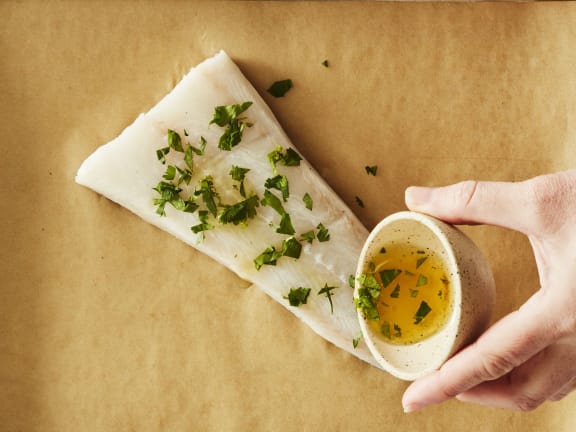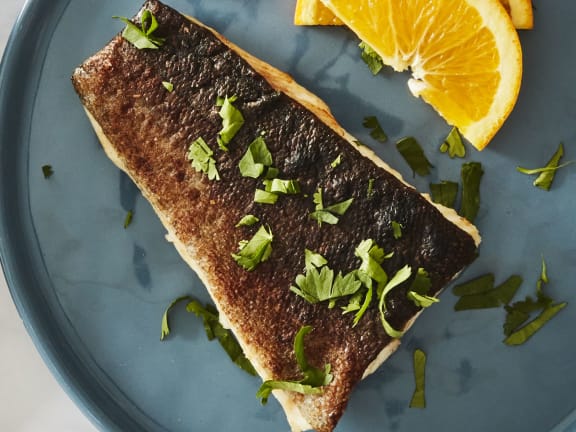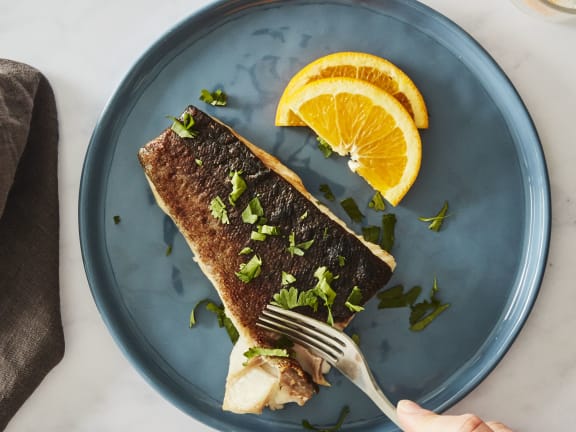A perfectly baked fillet of sablefish is flaky, velvety, and distinctly succulent. As one of the fattiest fish that we offer, rich in omega-3s, it's also one of the most forgiving regardless of which cooking method you use. When baked, it's an ideal blank canvas for dynamic marinades that develop in the heat of the oven. A quick finishing blast under the broiler ensures that the fats in the fish and any sugars in the marinade caramelize for full flavor and texture potential.
Simple Tips for Perfectly Baked Sablefish
-
Pat the sablefish fillet dry to remove excess moisture.
-
An instant-read thermometer ensures perfect doneness.
-
Broil the fillet to help bring out the natural richness of the sablefish.
How to Bake Sablefish
Gather your materials and ingredients: Your fillet(s), tea towel or paper towels, olive oil, marinade or salt & pepper, baking sheet

Arrange the top shelf in your oven so that it's 4 to 6 inches from the broiler element. Then, preheat your oven to 400F. Meanwhile, pat sablefish fillet dry with a tea towel or paper towel, then marinate or season as you like.

Transfer fillet to an oven-safe skillet or foil-lined baking sheet, then place on center rack and set timer for 10 minutes. Sablefish is medium-done when it flakes easily or has reached an internal temperature of 130F on an instant-read thermometer at its thickest part. If needed, continue cooking for a few more minutes to reach desired doneness.

If crispy skin is desired: Turn on broiler, then flip fillet so that it is skin-side up and move to top rack. Broil until browned and crispy on top, about 2 to 3 minutes. Transfer to a serving plate.

Enjoy! Once you've mastered the basic technique for baking sablefish, try spicing things up with sweet heat from our recipe for Spicy Gochujang Sablefish. Or, give the fillet a pre-sear to crisp up the skin to make this recipe for Pan-Roasted Sablefish with Squash Succotash.
Wild Alaskan Company delivers wild-caught, sustainable seafood directly to your door. Get Started.
*Consuming raw or undercooked meats, poultry, seafood, shellfish, or eggs may increase your risk of food-borne illness, especially if you have a certain medical condition. The FDA recommends an internal temperature of 145°F for cooked fish.





